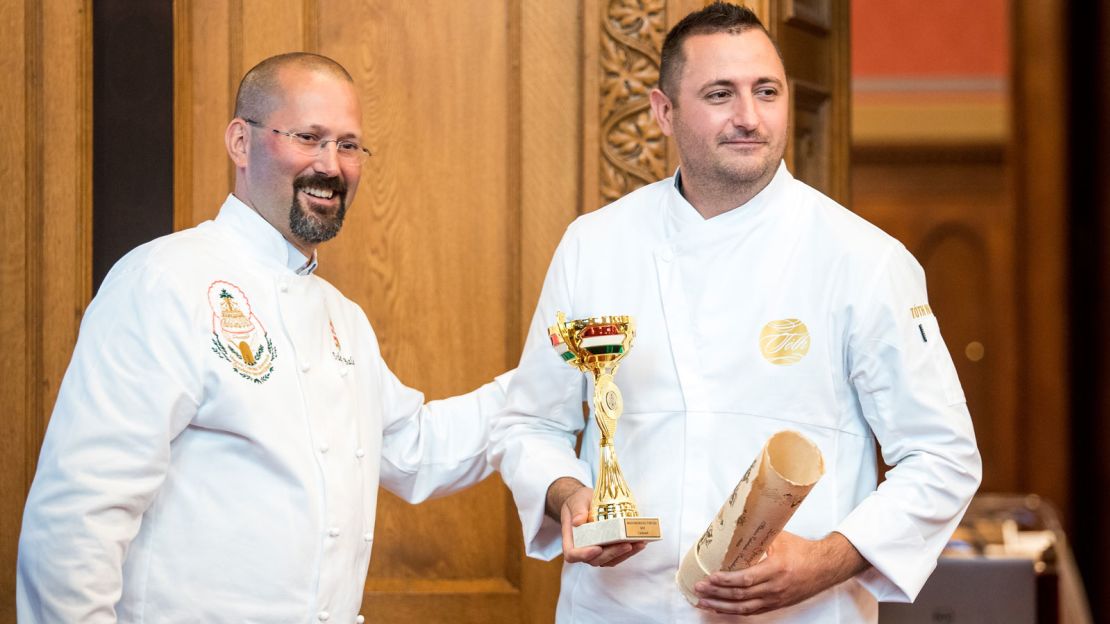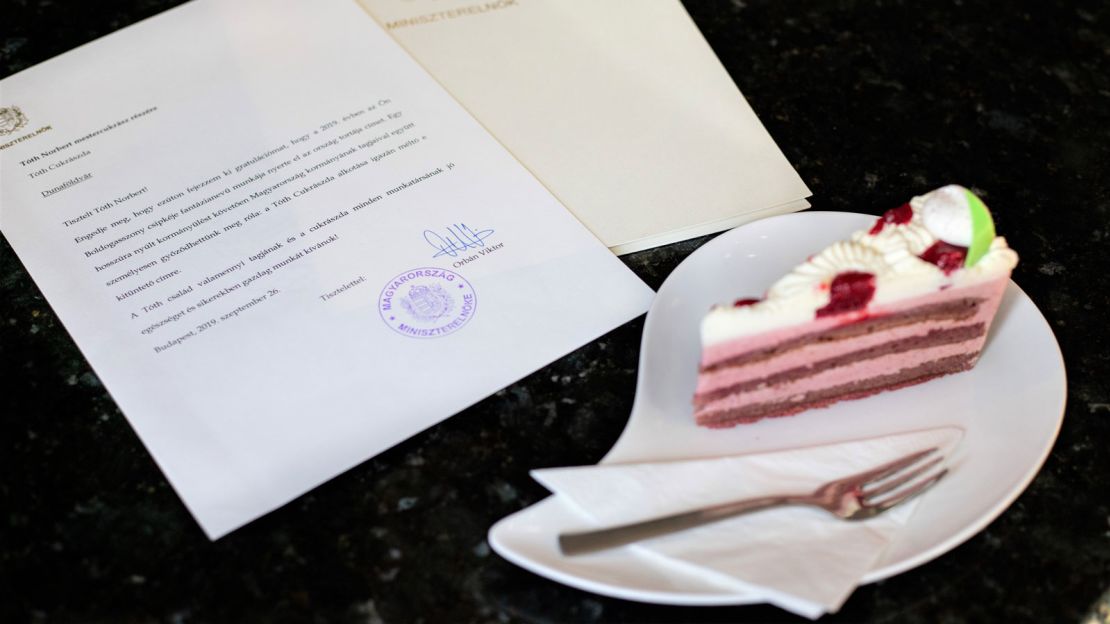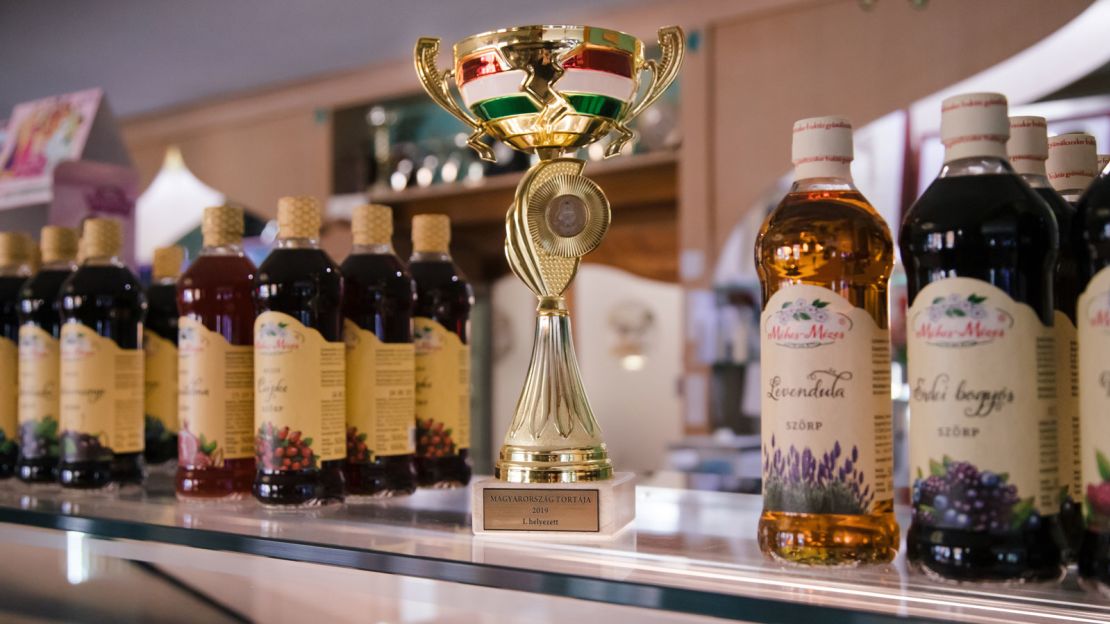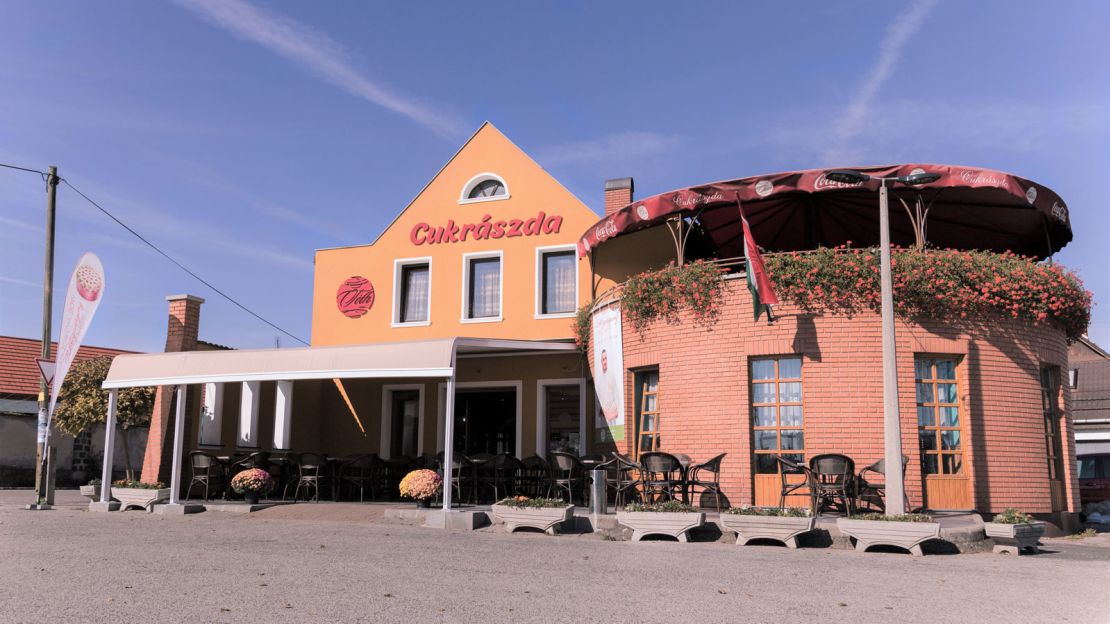Made with painstaking precision, Hungarian cakes are among the most luxurious and coveted in the world.
From the six-layered Dobos cake, created by famed baker Dobos C. József, to the Esterházy torte, comprised of layers of meringue and chocolate butter cream, nowhere does cakes quite like the Central European country.
In fact, confectionery creation is so ingrained in local culture, the National Confederate of Hungarian Confectioner sponsors an annual contest to choose “Hungary’s Birthday Cake,” by invitation of the government.
Open to the finest confectioners in the country, the competition was first held in 2007 to celebrate St. Stephen’s Day on August 20, a national holiday honoring the first King of Hungary.
This year’s winner, Boldogasszony csipkéje, which translates to “Happy Woman’s Lace,” was created by Norbert Tóth, one of the owners of Tóth Confectionery, a family-run business in Dunaföldvár.
Tóth originally entered the annual contest in 2016 at the urging of family and friends.
World class confectioners

“I don’t enjoy competition,” he tells CNN. “I thought, fine, I will compete this year and then they’ll all leave me alone.”
His first entry was an unusual cake that included beer, elderberry and yuzu.
“I got into the finals that first time and thought, if I got into the finals then let’s see what happens next year,” he says. “I got the taste and I had to win it.”
In the following years, he entered various cakes into the annual competition using non-traditional ingredients such as violets and marshmallow and coffee, malt and milk chocolate.
But while each of his entries made it to the finals, Tóth struggled to produce a winning creation – until now.
“In all the previous years I entered, I created modern cakes,” he explains. “But this cake looks like something from 20 or 30 years ago.
“It’s classic – but it’s made in a very modern way.”
The colorful cake’s main ingredient is raspberries, which make up around a third of its weight.
Not only is Boldogasszony csipkéje topped by 100 grams of fresh raspberries, it also contains 600 grams of raspberry purée and freeze-dried raspberry powder, to “ensure a consistent taste throughout.”
A smooth cream, produced by mixing the purée with egg whites, white chocolate, butter and whipped cream, is used to separate the cake’s layers, which are also soaked in the purée.
“There’s no sugar in the purée, as my goal was to create a cake that was not too sweet,” adds Tóth.
“Happy Woman’s Lace”

The white chocolate cream that weaves through the fresh strawberries on top of the cake represent the “lace” in its name.
The “happy woman” part is due to the health benefits of raspberry leaves, which contain vitamins B and C, as well as a variety of minerals and antioxidants.
Raspberry leaf tea has also been used as a remedy for menstrual cramps for centuries.
Tóth laments the decrease in raspberry fields in Hungary, which he says have dropped by 90% in the past two decades.
The confectioner beat off stiff competition from Hysteria Confectionery in Tapioszecso and Gergő Dezse of Mészáros Confectionery in Szombathely to be crowned the 2019 winner.
The judging process for Hungary’s Cake takes place over the course of a few months.
Confectioners spend months developing their recipes, as the rules stipulate the cake must have never been on sale before.
Live contest

Entrants submit their written recipes to the National Confederate of Hungarian Confectioners and a professional jury of seven select the winning cake over two rounds of baking.
The jury members rate the cakes according to different characteristics such as taste, appearance, consistency, texture, representative of Hungarian celebrations, creativity and innovation and technology.
According to László Selmeczi, “The cake does not necessarily have to represent the Hungarian culture, but it must represent a Hungarian flavor, or it may have a dominant flavor of Hungary, or it may be a ‘rethought’ version of traditional Hungarian cakes/desserts.”
Value for money is also taken into consideration, as the winning recipe is distributed to member confectioneries throughout Hungary to bake and sell and confectioners who sell Hungary’s Cake must sign a document agreeing to make it exactly as the recipe states, with no deviations.
On a designated day, entrants anonymously present their cakes and the judges narrow the field down to five finalists.
Their cakes are tasted again and judges suggest adjustments in writing to contestants, who remain anonymous at this point, in order to improve the final product.
A month later, a live competition is held in which finalists are given approximately five hours to prepare their cake in front of an audience of fellow confectioners, who watch the process carefully to ensure the recipes are followed to the letter.
Stiff competition

At the end of June, the finalists are notified of the winner, but contestants are sworn to secrecy until the official announcement is made during a press conference at Hungarian Parliament.
Finally, Hungarians get to taste the winning cake during the Street of Hungarian Flavours, held in Budapest in the days prior to the St. Stephen’s Day festivities, as well as various confectioneries.
This means that, up until next August, Boldogasszony csipkéje is Hungary’s official cake.
“Once you win the contest, the recipe no longer belongs to you. It becomes the property of the confederation.
“Other bakers can register to create the cake, but they must sign a contract saying they are going to make it according to the recipe.”
So committed are the confederate to the process, they implemented a program 10 years ago sponsoring confectioners to train with French counterparts.
“They help with expenses for local bakers to visit other countries and study with their bakers, as well as bringing those bakers to Budapest,” explains Tóth.
The week-long workshops offer confectioners the opportunity to learn new skills, as well as perfect their existing ones.
Now he’s finally taken the prize, Tóth says he doesn’t plan to enter the “grueling” contest again.
“It’s a lot of work, about 400 hours. Then, when you win, you spend more time with the media,” he says. “I have three daughters and would like to spend more time with my family.”
Tóth Confectionary was first opened as a gelato shop by Maria Tóth, the matriarch of the family, in 1983.
They moved down the road to their current location a decade later and added cakes to the menu.
Among its 25 staff members are Maria, her husband István Sr., Norbert and his wife and his brother István Jr., while Norbert’s grandmother also worked here once.
In the summertime, Tóth Confectionery offers 40 different flavors of ice cream.
But customers never really know what’s available, as the store has developed at least 150 different flavors since they’ve been in business.












